HOME
Not only high resolving telescopes but also high resolution spectroscopy give us deep information of observing objects. I have made several compact spectroscopy for astronomical telescope, and their resolving power are approximatelly 1nm. These do not satisfy me, so I am making a higher resolving Littrow type one, which is more compact and simple than others. This is a ray diagram of the Littrow type. 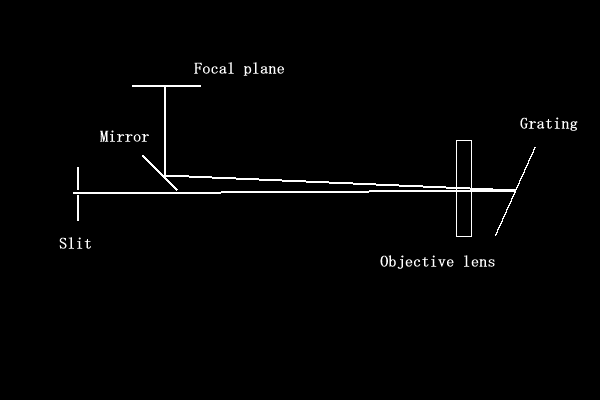 An objective lens has two works of collimating and focusing, so this point makes it simple. One of the difficulties to make is the unit of slit and eyepiece. Each part should be offset from the optica axis and be symmetry. 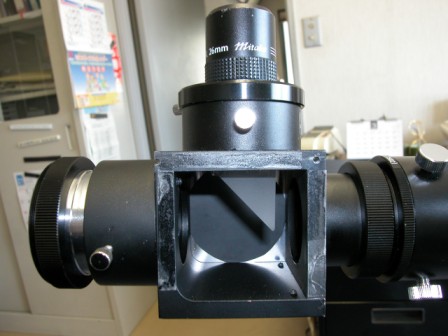 This is the whole view. I used Borg's 50ED tube and a grating is placed at one of the end of this tube. The grating is hold by a rotary holder. 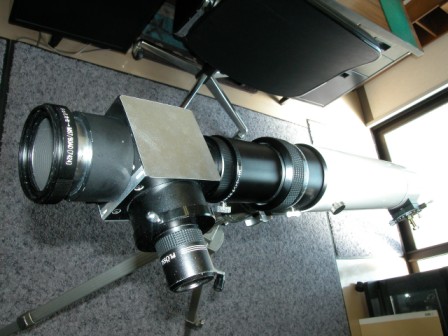 This is the grating unit that was equiped on the food of the scope. 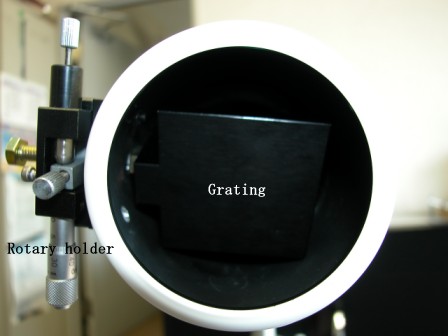 Then, I took spectral images of the sun through 26mm PL eyepiece by a Nikon digital camera. There are so many lines in the spectrum, and this picture was combine each range. The red one is around 656nm, and orange one is around 590nm. See the deep absorptions. 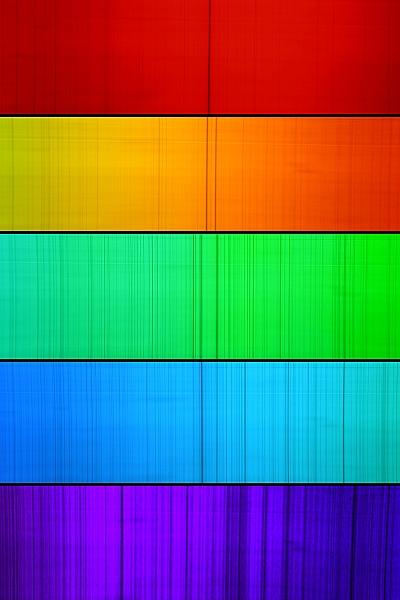 The resolution seems to be 0.5 Angstrome approximatelly with a wider slit. The theorical resolution of this case is 0.1 Angstrome. This is high enough to observe a Zeeman effect of sunspots. This spectrocopy can be attached to a telescope with 2 inch nose piece. My next target is an observation of sunspots, doppler shift of Jupiter and Saturn rotations. Other observations.    More interesting observations. The slit position is just on the limb of the sun. 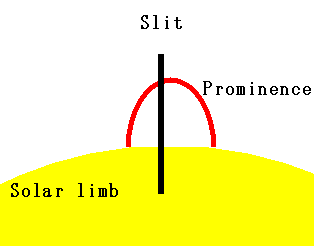 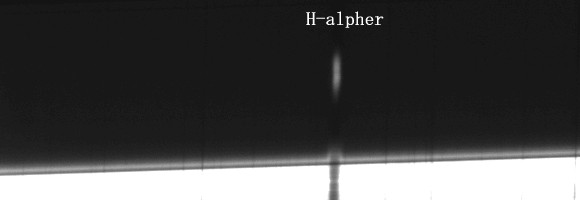 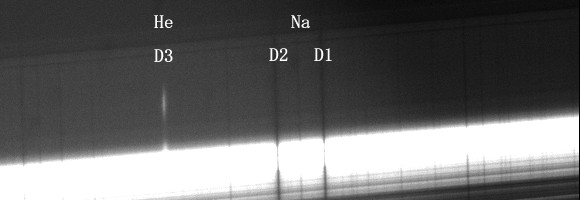 Much more high level observation by old technich, slit-scan. 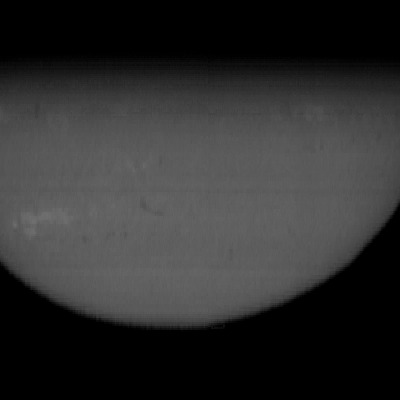 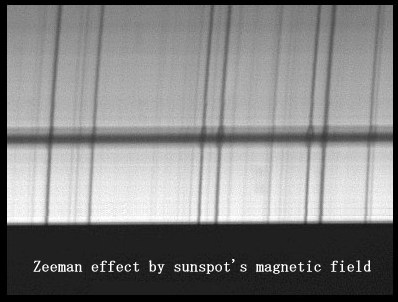 Mail to me about HRS August 17th, 2003 Feburaury 27th, 2004 in result |